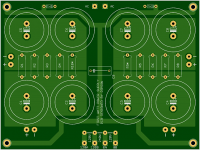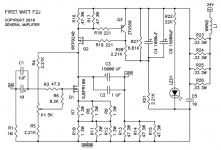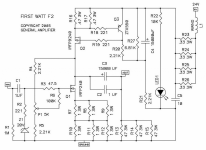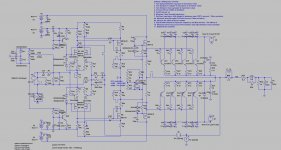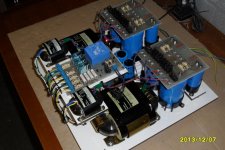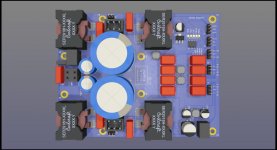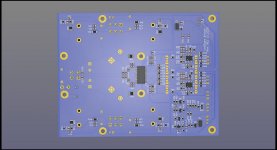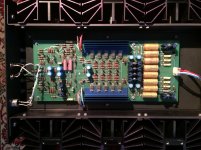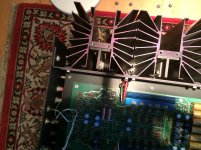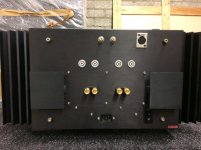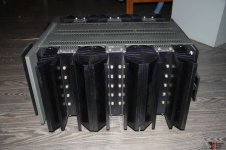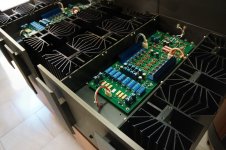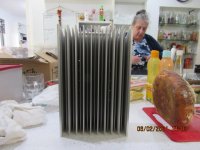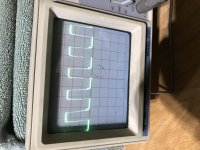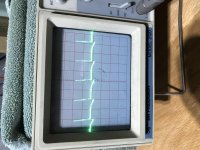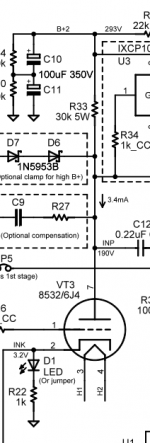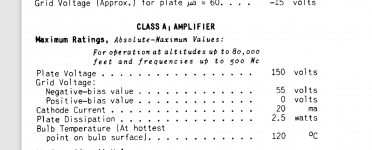Hi guys,
I bought this on a whim, a version 3, KSA-250 that had hum on one channel. It was a 10 hour drive away so I made the deal on the phone and a friend brought it to me on his trip home. Owner said one channel was fine, the other played music but had some hum. I decided to recap rather than power it up first....
It's a 1995 variation, and had been all recapped EXCEPT for the main power caps, why would anyone pull it all apart and not change the main caps. I thought that would be the issue, easy fix....NOT! When I pulled the cover I discovered on one channel a 1R emitter resistor was missing, and on the other, one was burnt, but still read 1 ohm. I put in a 1R in the missing spot, checked the TO-3 associated with it and it was good. Put in all new main PS caps and powered it up today thinking, ya, it's fixed. Ooops.
So, I haven't delved into troubleshooting it yet, too dejected, will start this weekend, but just a quick summary of what happens. I have meters on both main caps, one left, one right, when I hit the power button, the front board relays click and I get 80VDC on the right, and 80VDC on the left, but then after about 1.5 seconds the amp shuts down and the left channel immediately dropped to 67VDC, the right channel stays at 80VDC. My initial reaction is well it must be the left channel causing the shutdown as there is current drawing the main caps down, but then the 'ol brain says, wait, no current draw on the right, caps staying at 80VDC, maybe it's the right.
At this point, I unplugged and went for a refreshment. I'll pick it up again tomorrow.
As there are no schematics available, I will be troubleshooting this blind . I am an experienced electronics tech of about 50 years, and fixed a dead ML-332 last year, but I had schematics for that, so I am pretty good at troubleshooting.
Just thought I would get the story out there to be digested by all and hopefully a few ideas pop forward.
Any and all help much appreciated.
Cheers!


.thumb.jpeg.bc51076e4c658ea93fbcc6ff0eaecf77.jpeg)
.thumb.jpeg.1024547a1aa0ecc767c9454a0b12011b.jpeg)
.thumb.jpeg.5e22a4e84534ff073a15e32242e30add.jpeg)
.thumb.jpeg.271b87bf58f89ef72e8315457f9a9fca.jpeg)
.thumb.jpeg.35ff85eb621dc3337e33c952e55d2e41.jpeg)
.thumb.jpeg.1178c04de83a4bed32672807c11e04e8.jpeg)

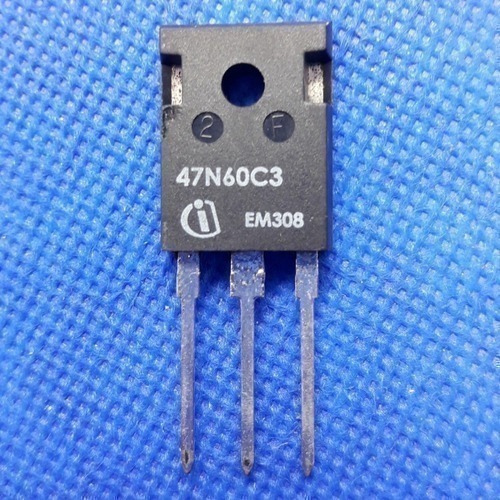
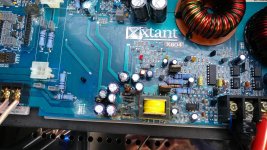
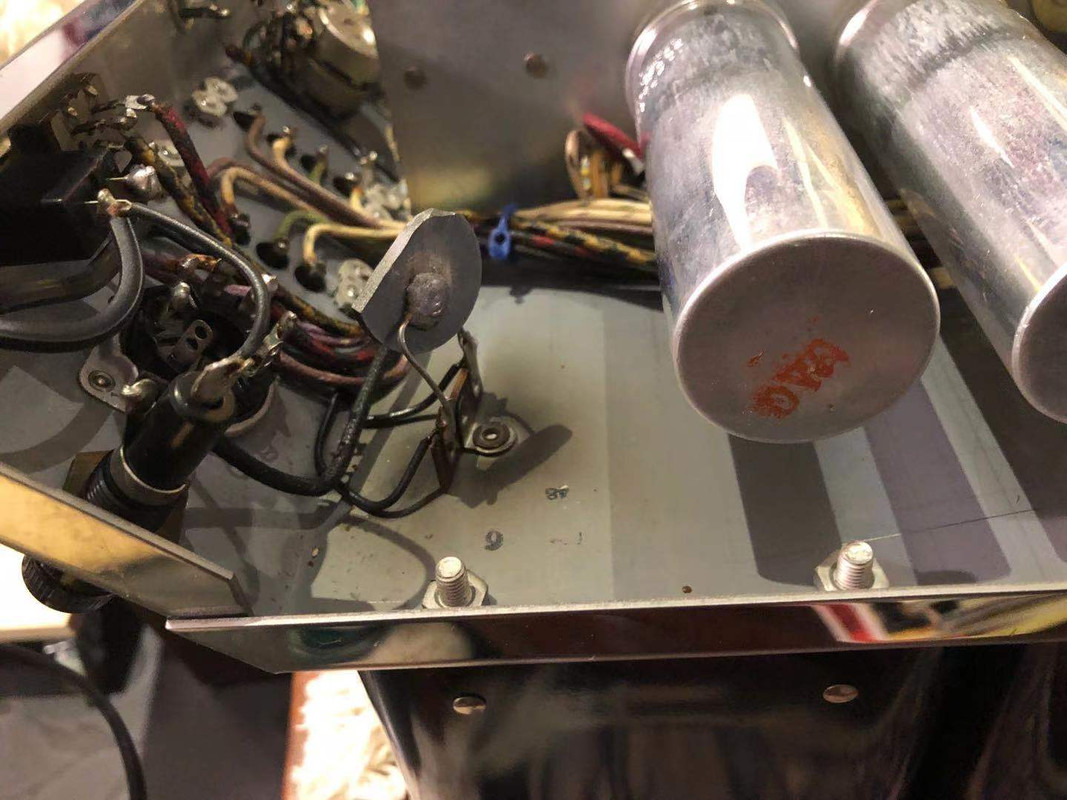

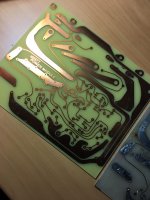
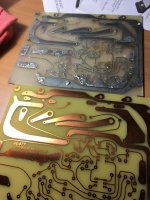
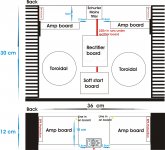
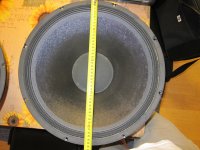
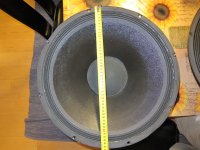
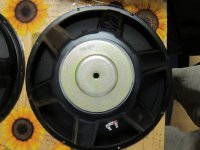


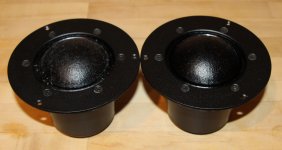
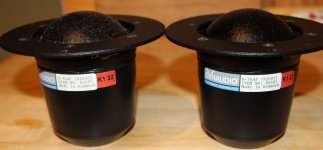
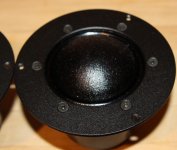
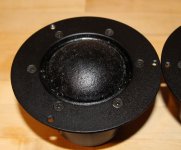
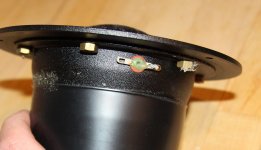
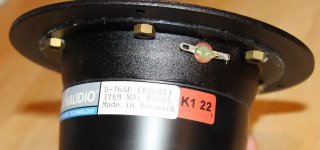
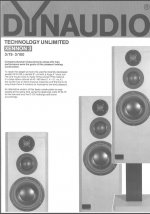
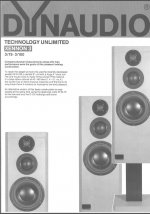
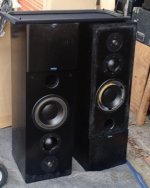
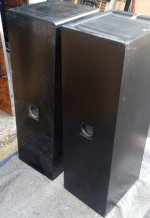
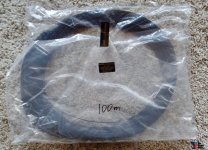

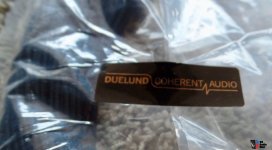



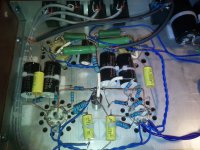
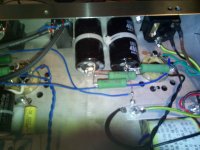
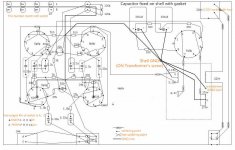
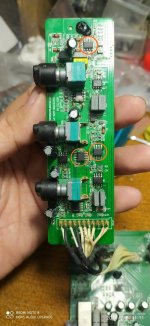



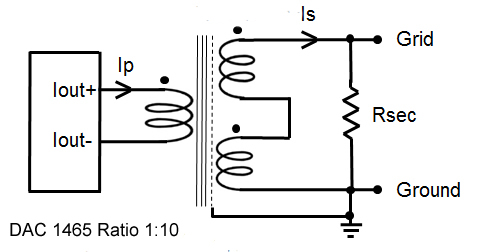
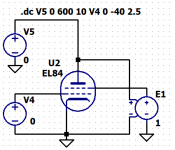
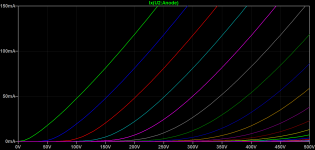
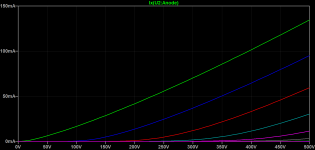
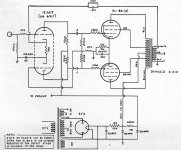
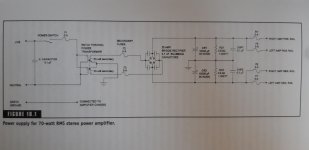
:no_upscale():strip_icc():fill(white):strip_exif()/f/image/aY0qiZTDIq97EMUzNt2xnVAy.jpg?f=user_large)
:no_upscale():strip_icc():fill(white):strip_exif()/f/image/oml4NL0P5dMc7NeMU0Mo3554.jpg?f=user_large)
:no_upscale():strip_icc():fill(white):strip_exif()/f/image/yIHrBeRmfYgwB1XnClGDtJL0.jpg?f=user_large)
:no_upscale():strip_icc():fill(white):strip_exif()/f/image/3HLfL0J7TXWfMqmaFPBeuGOI.jpg?f=user_large)
:no_upscale():strip_icc():fill(white):strip_exif()/f/image/r4k9egd00eGflgoQio5vZOYt.jpg?f=user_large)
:no_upscale():strip_icc():fill(white):strip_exif()/f/image/ksj7m4lZpvFXqKBwLGsstpue.jpg?f=user_large)
:no_upscale():strip_icc():fill(white):strip_exif()/f/image/Mtb1Sl6Oe93gKTpCA2AOT2hJ.jpg?f=user_large)
:no_upscale():strip_icc():fill(white):strip_exif()/f/image/qPSBePw1yQVX8r49B0gkrvro.jpg?f=user_large)
:no_upscale():strip_icc():fill(white):strip_exif()/f/image/mhhrOqnmaKCJhK902ZQLIWyn.jpg?f=user_large)
:no_upscale():strip_icc():fill(white):strip_exif()/f/image/eEidKZCE5vPbymjcB8q5a3jv.jpg?f=user_large)
:no_upscale():strip_icc():fill(white):strip_exif()/f/image/GRB9q3ec1pRMqhAmMQXCpkxe.jpg?f=user_large)
:no_upscale():strip_icc():fill(white):strip_exif()/f/image/xXZVltI4gDtqieuhth8OF8l8.jpg?f=user_large)
:no_upscale():strip_icc():fill(white):strip_exif()/f/image/XMF5AQCeL61NIoZFBze45O5T.jpg?f=user_large)
